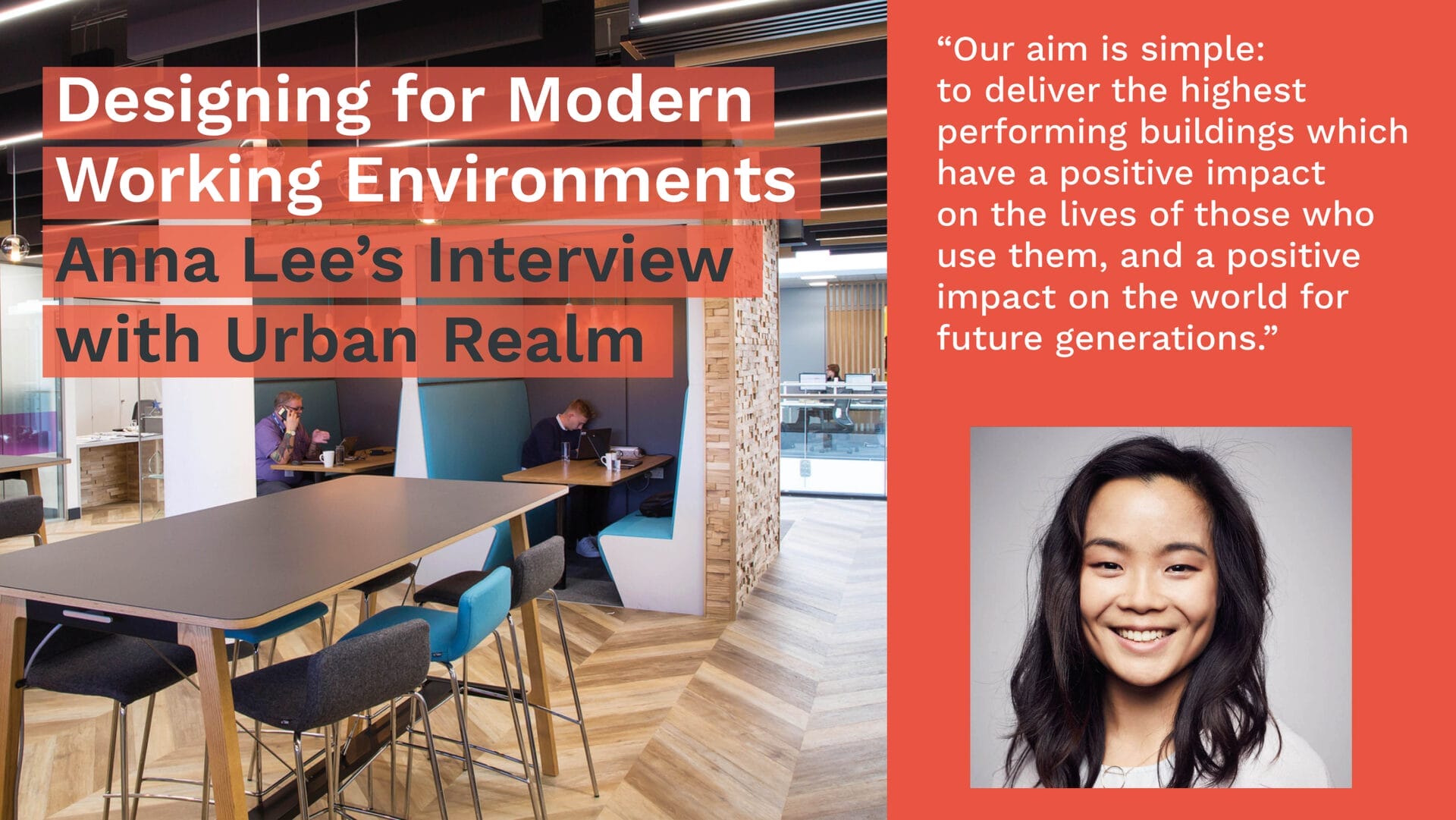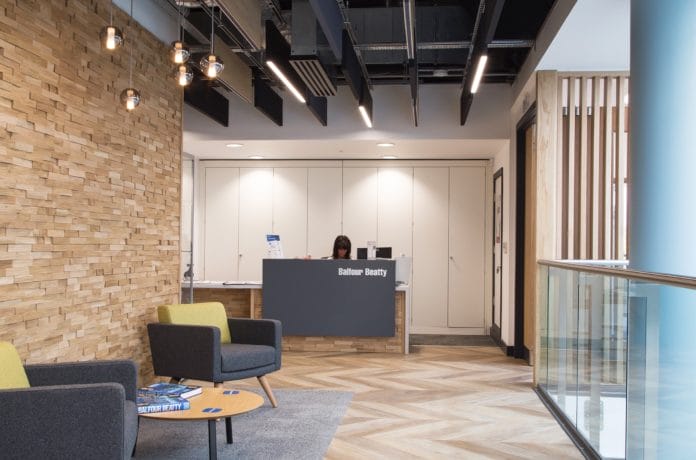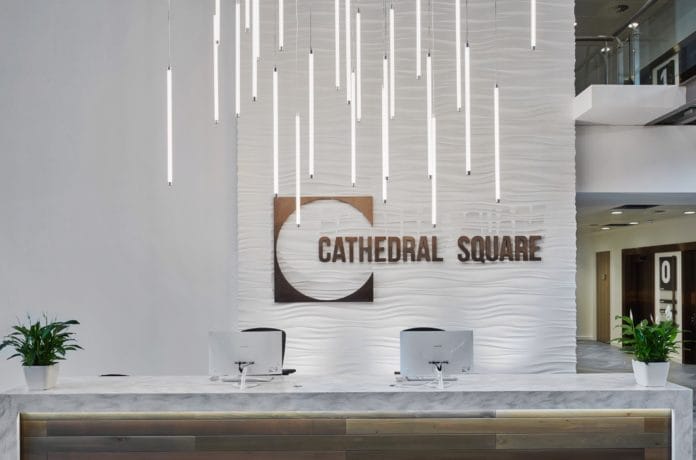
In the most recent edition of Urban Realm magazine, industry experts were asked how increased focuses on flexibility, wellness and sustainability are influencing their work in interior design.
Here’s what Senior Interior Architect, Anna Lee had to say about these three important elements of modern design.
Our aim is simple: to deliver the highest performing buildings which have a positive impact on the lives of those who use them, and a positive impact on the world for future generations.
How is the demand for adaptable and flexible spaces impacting your work?
The demand for ‘flexibility’ is huge, and the hybrid work landscape will continue to evolve as we’re all re-establishing how we want to work, how teams meet and how the organisations intend to foster their internal culture. However, understanding the degree of ‘flexibility’ is paramount, it is not about making everything ‘flexible’. It is important to work closely with the client to identify the key functions of work that need to be supported, and matching it with the right category of spaces.
This way, users can comfortably make adjustments within these zones, whilst there are still design cues to help inform the designed functions and behaviours, as well as the mechanisms in place to manage it. When teams are allowed to solve for themselves what is best for their work patterns, it can be very empowering.
How do we design our environment around wellness?
Given the collective experiences of the last 2 years, designing around wellness, holistically, is more important now than ever. Beyond providing comfortable environments with good air, light, and acoustic quality that considers our physical wellbeing, it is critical that workspaces also do more to improve our mental wellbeing, reduce stress and provide psychological safety.
Things we can do to include space planning strategies and manage the level of energy/activity on a floorplate; fit for purpose spaces to suit different styles of collaboration; good wayfinding and technology tools to reduce user frustration; employing biophilic principles to appeal to our senses, connect us to a more natural state; social spaces to develop sense of community and belonging; providing dedicated areas for respite and reflection. Finally, the quality of spaces that help us live out our hybrid lives – personal spaces such as mothering rooms, prayer rooms, space to take a personal phone call, can make a big difference to employee’s overall wellbeing.
What are you doing to improve sustainability?
By combining innovative sustainable design with the practicalities of achieving statutory compliance and accreditation, we can generate long term environmental and commercial value for our clients. By adopting the targets and approach set out by the RIBA in their 2030 Sustainable Outcomes Guide, we are determined to guide and influence our clients. We have set ourselves a bold and ambitious goal that all projects designed in our studios will be capable of meeting these targets by 2025. Our aim is simple: to deliver the highest performing buildings which have a positive impact on the lives of those who use them, and a positive impact on the world for future generations.


